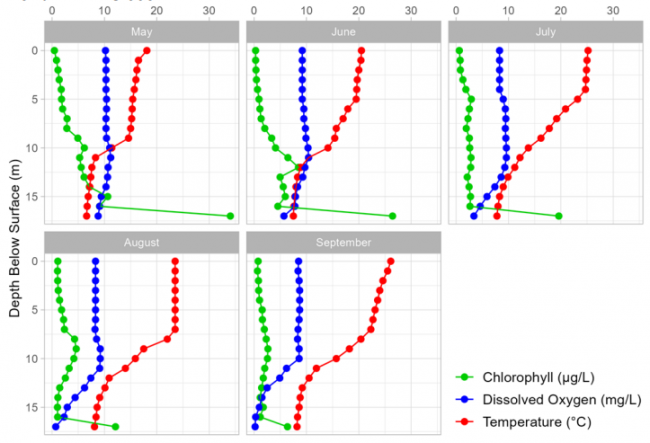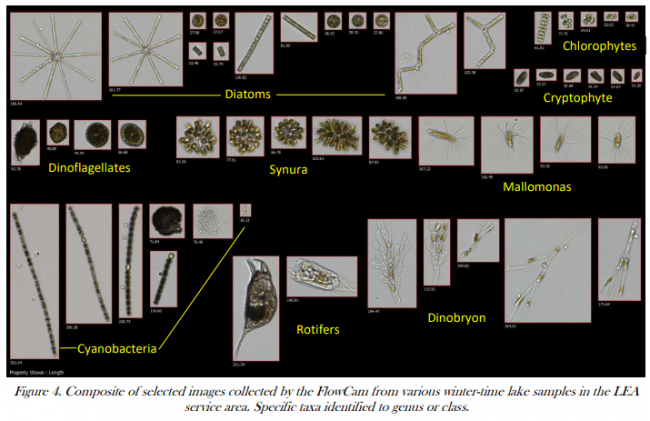
May – Tricky Pond was stratified when LEA’s water testing team collected the first fluorometer profile in late May. In the upper waters, fluorescence values remained fairly uniform. In the middle waters fluorescence values gradually increased to a small peak at 10 meters. This fluorescence increase occurred near the thermocline where rapidly changing water density likely provided algae a place to “sit”. Increased fluorescence values near the bottom are likely caused by interference from bottom sediments.
June – In the upper and middle waters, fluorescence values remained uniform. In the deep waters, fluorescence values increased until reaching their peak at 12 meters. This fluorescence increase occurred near the thermocline where the rapidly changing water density provided algae a place to “sit”. Increased fluorescence values near the bottom are likely caused by interference from bottom sediments.
July – Fluorescence values remained fairly uniform throughout the water column. The spike in values at the bottom was again likely caused by sediment interference.
August – In the upper waters, fluorescence values remained uniform. In the middle waters, fluorescence values increased to a small peak at 9 meters. This peak was accompanied by a small increase in oxygen. This oxygen was likely produced by algae as a by-product of photosynthesis. In the deep waters, fluorescence began to decrease with depth. The spike in values at the bottom was again likely caused by sediment interference.
September – Fluorescence values were low and varied little throughout the water column. The highest (but still low) values were seen in the thermocline where pressure differences and nutrient availability may have allowed for better growing conditions. Increased fluorescence values near the bottom were likely caused by interference from bottom sediments.
Synopsis: Likely because of Trickey Pond’s excellent clarity, the highest algae concentrations were quite deep in the water column, where there are more nutrients and still ample light. Most fluorometry values were low, with some moderate readings below 7 meters in depth. High readings in the bottom waters were likely caused by sediment interference.

Gloeotrichia echinulata (a type of cyanobacteria (blue-green algae) commonly found in low-nutrient waters) can be seen with the naked eye. Gloeo density is reported as a value ranging from 0 – 6, based on the number of Gloeo colonies seen through a Secchi scope. Higher values indicate more Gloeo colonies.

